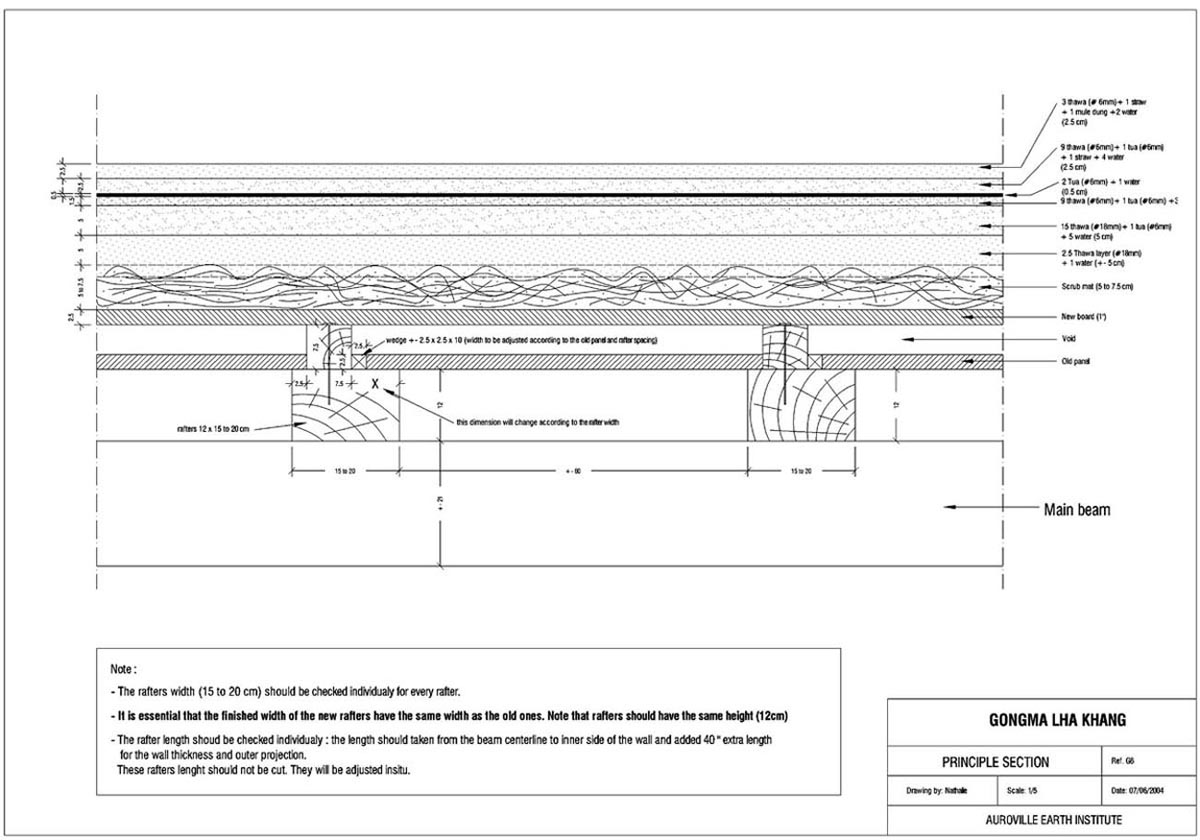Conservation project of Nako Temples

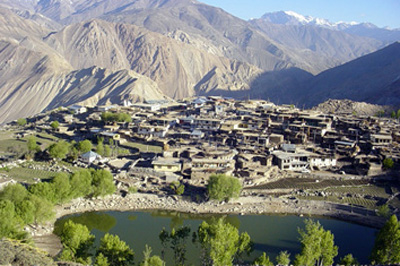

The Buddhist temples from the 12th century at Nako, in the Kinnaur region of Himachal Pradesh – Western Himalayas of India, have been identified as one of the 100 most endangered heritage sites by the Worlds Monuments Fund.
The traditional earth architecture of the Himalayan area has been designed for arid and cold climate. This architectural heritage of Nako, which has survived for approximately 800 years, has recently started showing serious signs of deterioration –both physical and cultural. Recent years have witnessed a considerable change in the climate and the region now receives regularly rainfall every year. This increase of rainfall is affecting adversely all traditional buildings and especially the historic temples of Nako. This preservation project is a joint undertaking based on the cooperation with the local Nako Chug Lhakhang (Buddhist Temple) management committee, Indian and Austrian conservation architects, Romi Khosla Design Studio-New Delhi and the Interdisciplinary Research Unit on the Cultural History of the Western Himalaya – University of Vienna, Austria. This project has been funded by the World Monument Fund and other private donors.
The services of the Auroville Earth Institute have been requested at the end of May 2004 for two purposes:
1. Research some alternative solutions with totally natural materials for the waterproofing of the Temple’s roofs.
2. Help the extension of the Buddhist Temple, where villagers could go during the conservation activities in the historic temples. This extension was supposed to be done with compressed stabilised earth blocks.
A one-week training course for block making was conducted to the local villagers, with one Auram Press 290. Trainees learnt all details from soil preparation to quality control. The curing aspect had been emphasized a lot as the area had always a dry wind with high velocity.
After analysis of the situation and the way the traditional waterproofing were done, a research programme was elaborated. These tests aimed to find waterproof combinations for the walls plasters and the roof of one of the temple, the Gongma Lhakhang, which was the most endangered. The main aim of these tests was to use only local materials easily available in the area and without adding any foreign material.
Four different combinations were tried with various coats of local clay (Tua), soil, barley straw and dung (mule or cow). They were implemented while Satprem, from the Auroville Earth Institute was there. The samples had to be air dried slowly and then monitored by the local team remaining there.
The samples were monitored by pouring 3 litres of water on the samples, which represented about 12mm of water per m2 of roof. This amount was decided to represent a heavy rainfall of a few hours. The monitoring shown that the samples were too young and that the last coat which had dung was too fragile and not homogeneous. Nevertheless, the speed of absorption was not too high: 1 h 25 min. for the best sample. The total water absorption was measured with an electronic moisture meter: the moisture at the base of the best sample was not higher than 26 % after 6 hours of absorption.
The new roof structure and the waterproofing with the specifications of the best sample were implemented in summer 2005. A small development has been done by Ms. Sweena Berry, who was in charge of this work, by adding some layers of birch bark below the earth layers. This roof behaved well till now after the increasing rains which fall on Spiti.
Satprem visited the temples in 2019 and the monks confirmed that the roofs were still waterproof 14 years after their renovation.
TEST SAMPLE PROCEDURE FOR WATERPROOFING THE ROOF



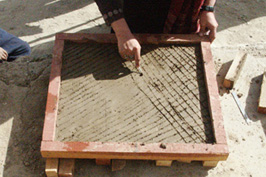
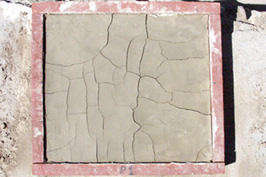
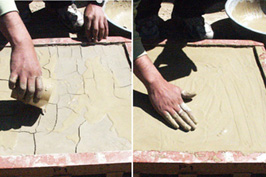
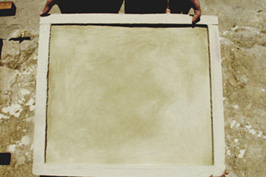





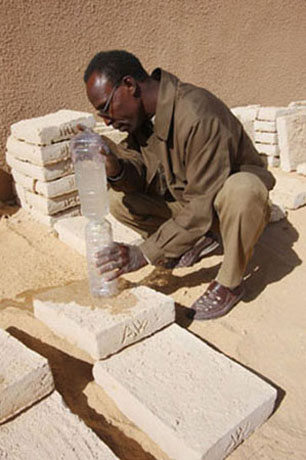

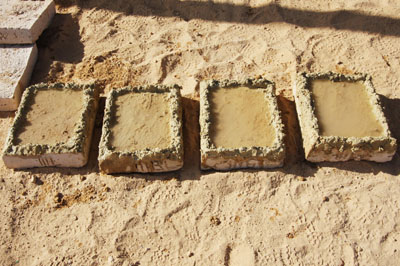
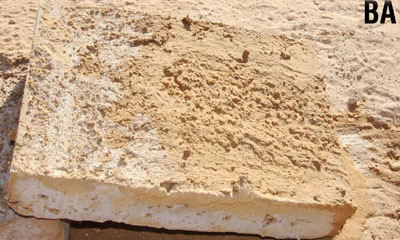
RESTORATION WORKS
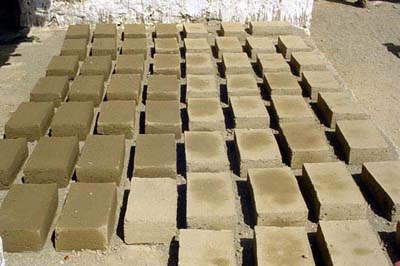

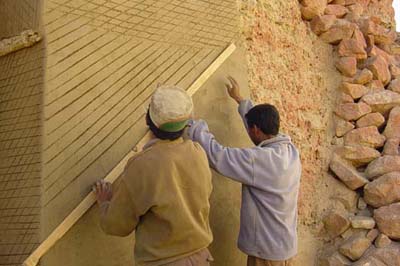
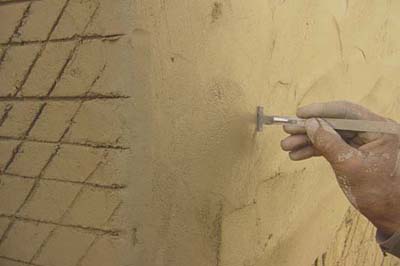

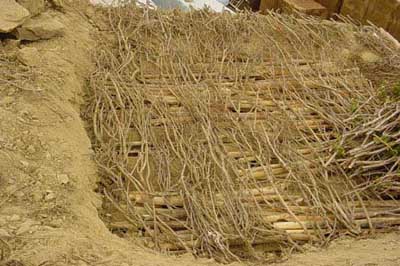


NAKO TEMPLES

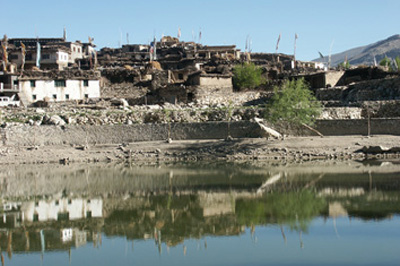

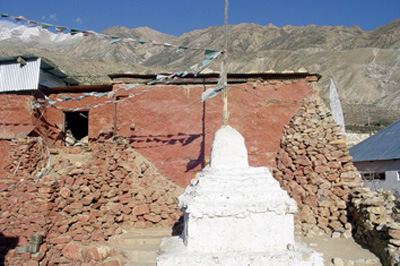











Contact US
- Address:Auroville Earth Institute, Auroshilpam, Auroville 605 101 - T.N. India
- Phone:+91 (0) 413 - 262 3330 / 262 3064
- Email:info@earth-auroville.comOpens in your application

